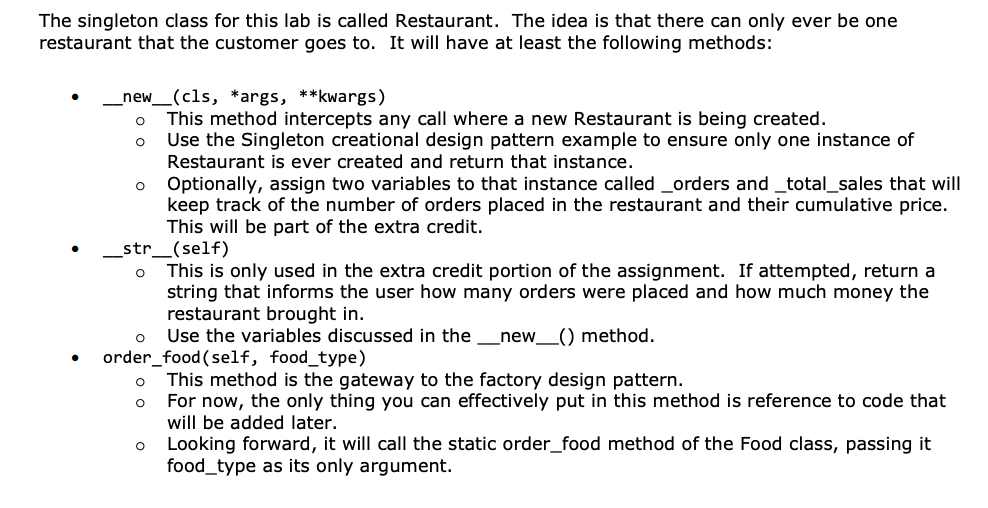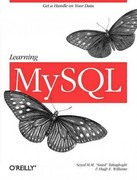Answered step by step
Verified Expert Solution
Question
1 Approved Answer
Hello, In this project, I need to use several design patterns together to emulate a task - a restaurant creating meals for customers. It requires
Hello,
In this project, I need to use several design patterns together to emulate a task - a restaurant creating meals for customers.
It requires a decent understanding of the design patterns employed:
- Singleton: A class of which only a single instance can exist
- Factory: Creates an instance of several derived classes
- Faade: Wrap a complicated subsystem with a simpler interface
Would anyone please help me with this question?
Here I coded some but I am not sure if I am following the question...
from math import pi class Restaurant(): def __new__(cls, *args, **kwargs): def __str__(self): return f"{__class__.__name__}: ({self.x}, {self.y}) r: {self.radius}" class Food(): def order_food(self, food_type): self.food_type = food_type
The question:


Step by Step Solution
There are 3 Steps involved in it
Step: 1

Get Instant Access to Expert-Tailored Solutions
See step-by-step solutions with expert insights and AI powered tools for academic success
Step: 2

Step: 3

Ace Your Homework with AI
Get the answers you need in no time with our AI-driven, step-by-step assistance
Get Started


